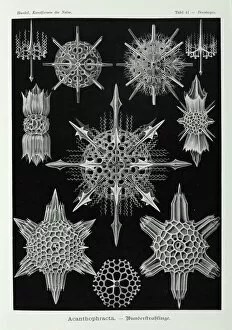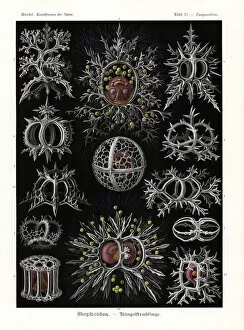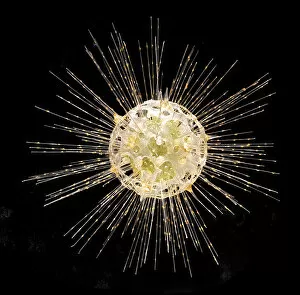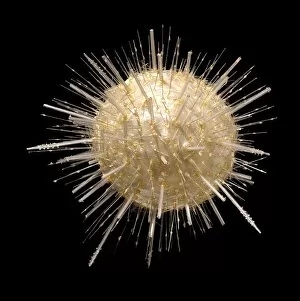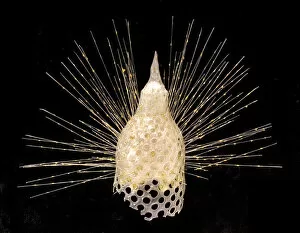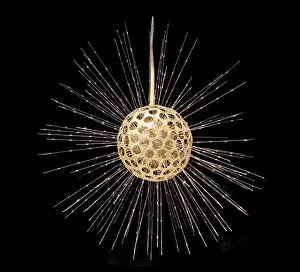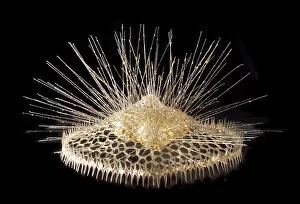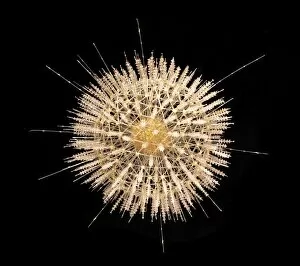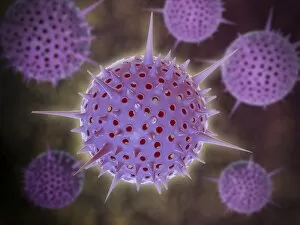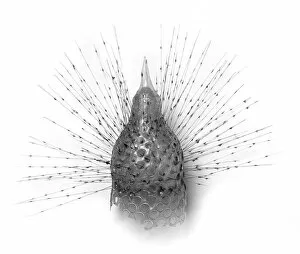Radiozoa Collection
Discover the mesmerizing world of Radiozoa, a diverse group of microscopic marine organisms that inhabit our oceans
For sale as Licensed Images
Choose your image, Select your licence and Download the media
Discover the mesmerizing world of Radiozoa, a diverse group of microscopic marine organisms that inhabit our oceans. Among them are Acanthophracta and Stephoidea radiolarians, known for their intricate skeletal structures resembling delicate works of art. Take a closer look at Dorataspis diodon, an enchanting radiolarian with its spiky exterior that resembles a tiny sea urchin. Aulacantha scolymantha is another fascinating member of the radiozoa family, characterized by its long and slender body adorned with numerous spines. Actinomma asteracanthion showcases its beauty through its symmetrical arrangement of needle-like projections. Not to be forgotten is Actinophrys sol, a unique heliozoan species that captivates with its sun-like appearance. Heliosphaera actinota stands out among other radiolarians due to its star-shaped structure which glimmers in the sunlight. Witness the elegance of Aulosphaera elegantissima as it displays ornate patterns on its spherical shell. Eucyrtidium cranoides impresses with its complex architecture reminiscent of an ancient cityscape while Eucecryphalus schultzei exhibits intricate lattice-like designs. Spongosphaera streptacantha amazes with elongated spicules extending from its central body like delicate tendrils reaching into the water column. These captivating creatures collectively form the vast kingdom known as Radiolaria – masters in adapting to various oceanic environments throughout history. As scientists continue to explore and study these remarkable organisms, we gain further insight into their ecological roles and contributions within marine ecosystems. The world beneath our waves holds endless wonders waiting to be discovered.

